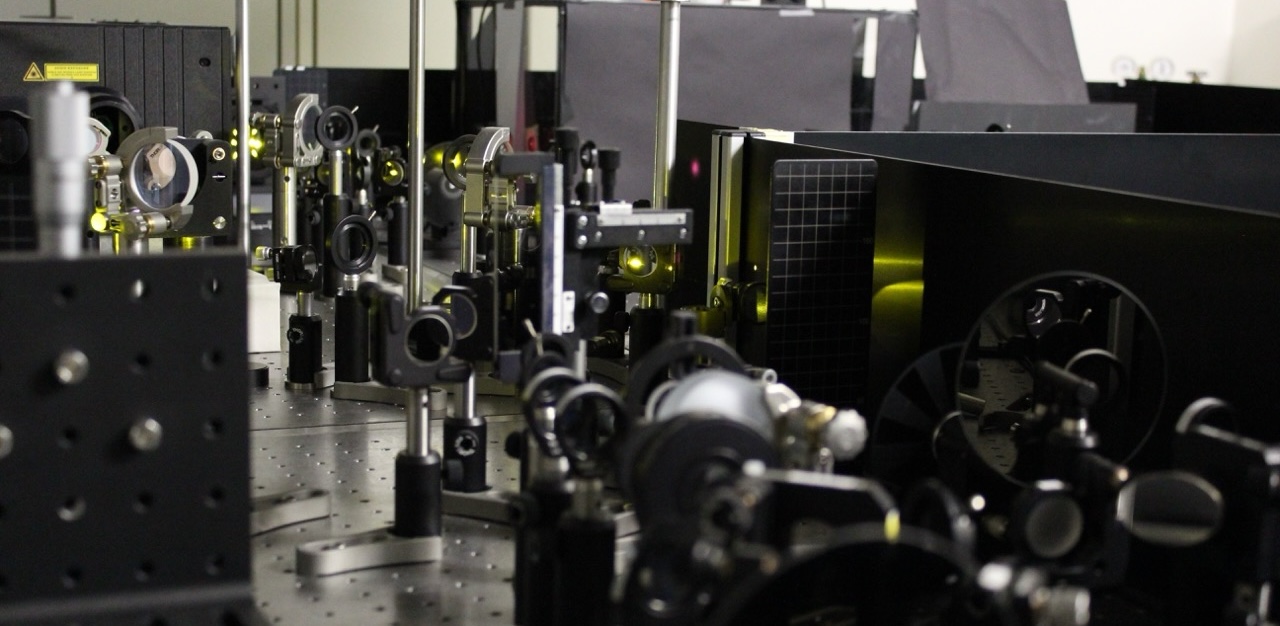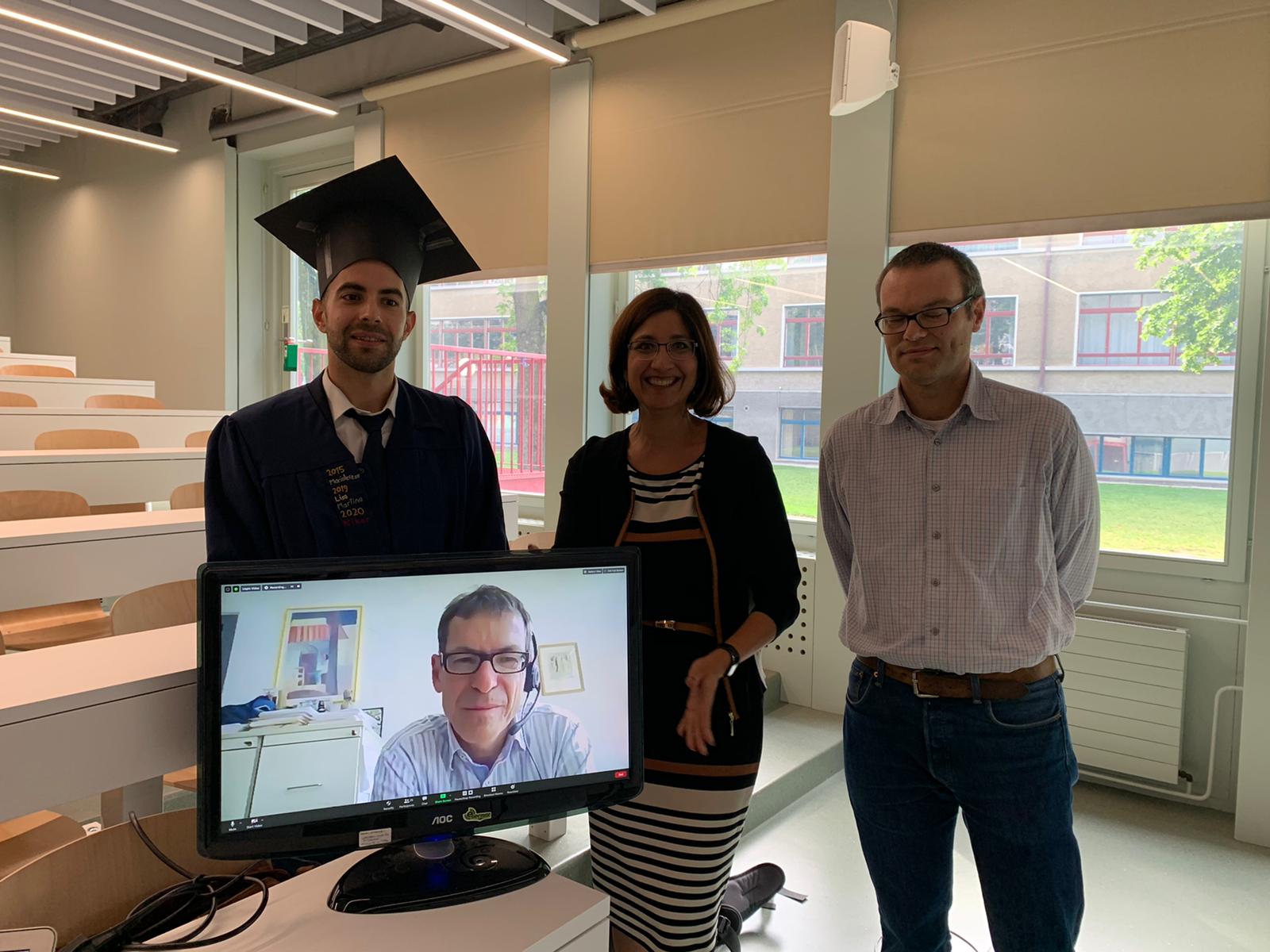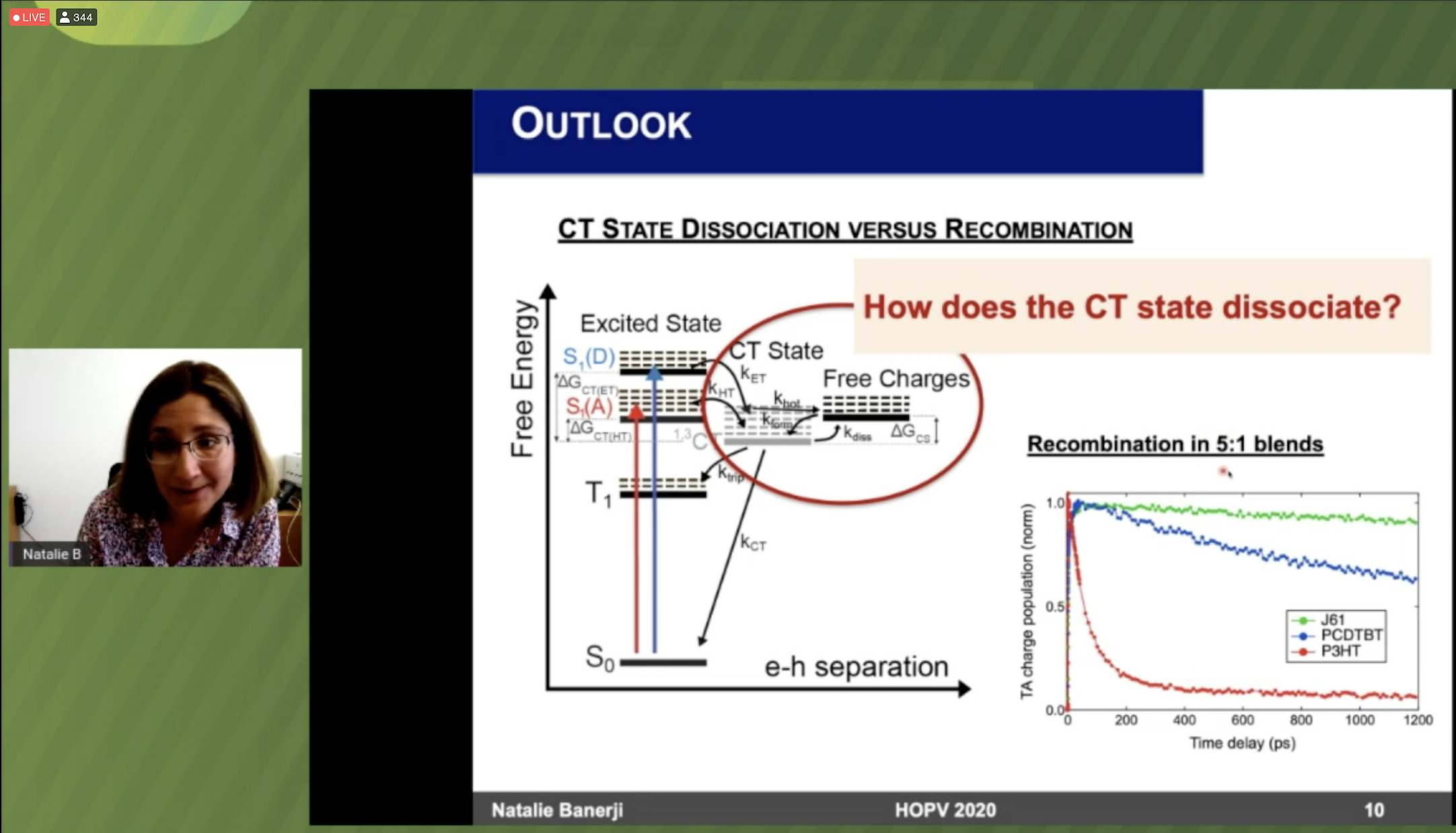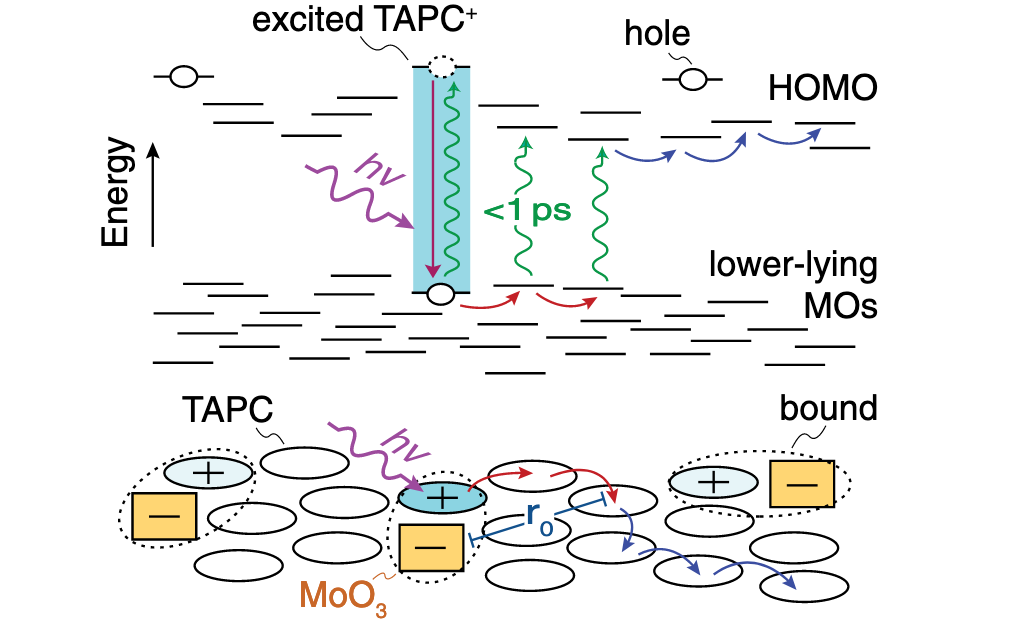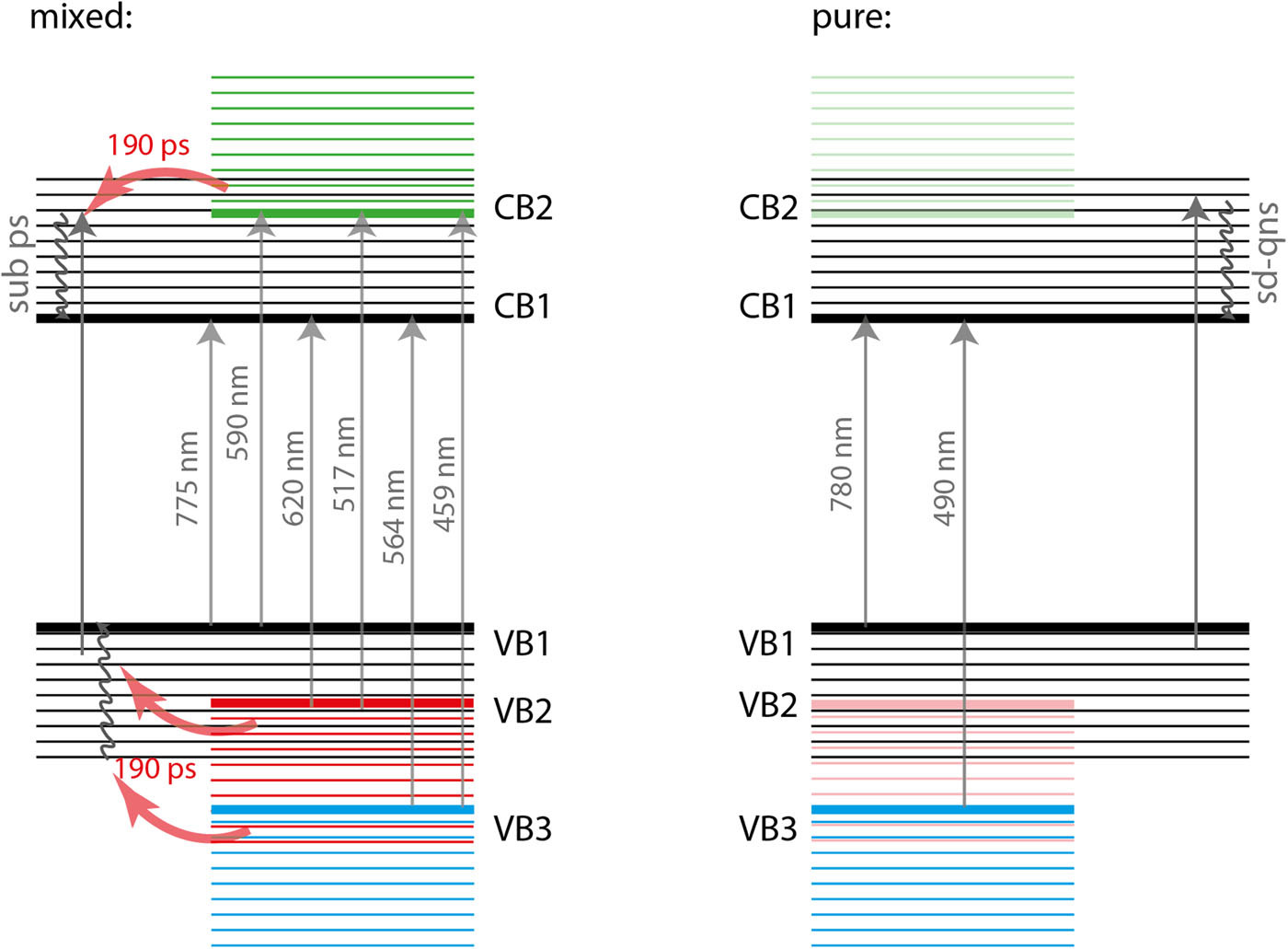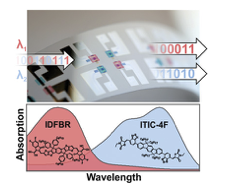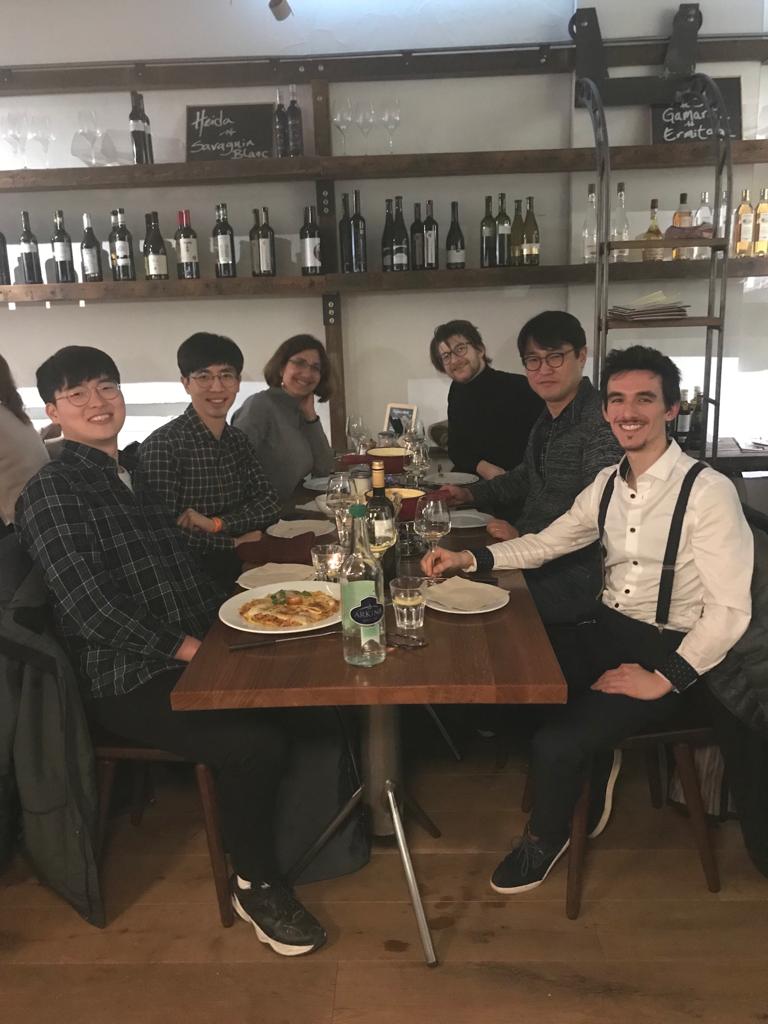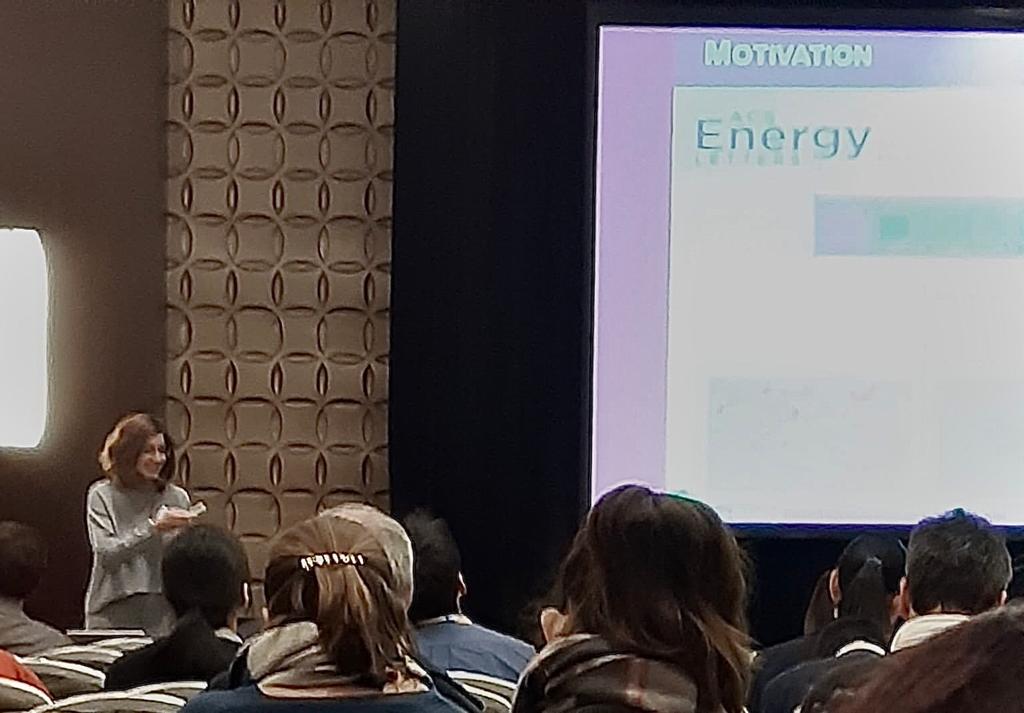Follow us on social media!
Who we are
We are a young and dynamic research group based in Bern, Switzerland, and led by Prof. Natalie Banerji. In our group, chemists as well as physicists and material scientists work side by side to understand and optimize electronic devices based on organic electronic materials. In addition, we combine the best of two worlds by welcoming researchers from all over the world and by teaching local students from Bern.
This combination of different backgrounds and experiences forms a powerful symbiosis that enables us to understand the underlying principles of charge transport in the materials we study.
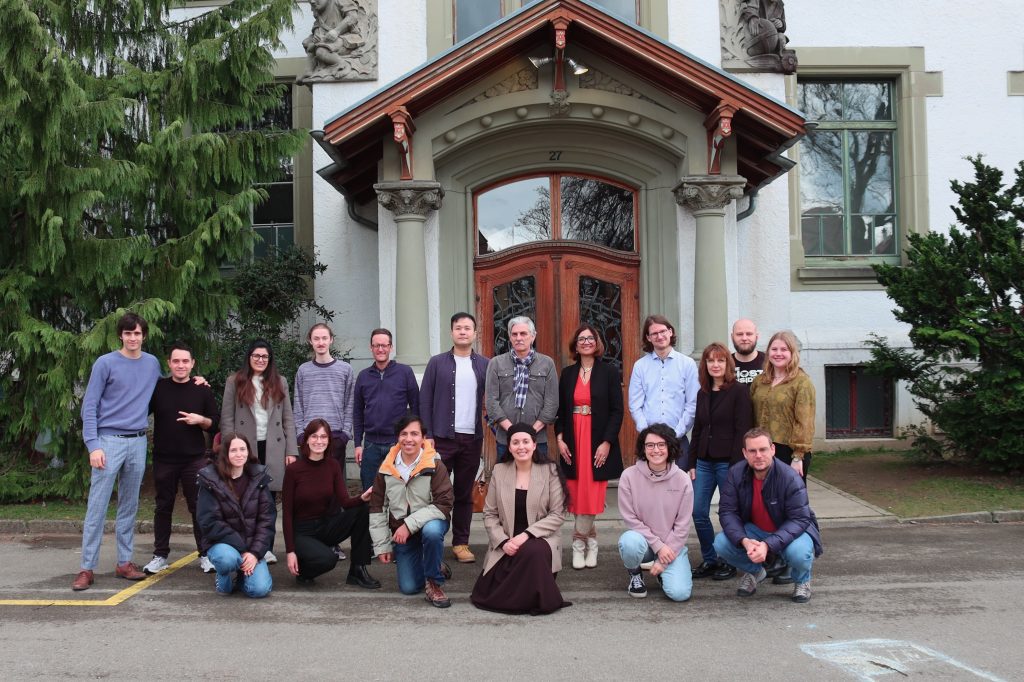
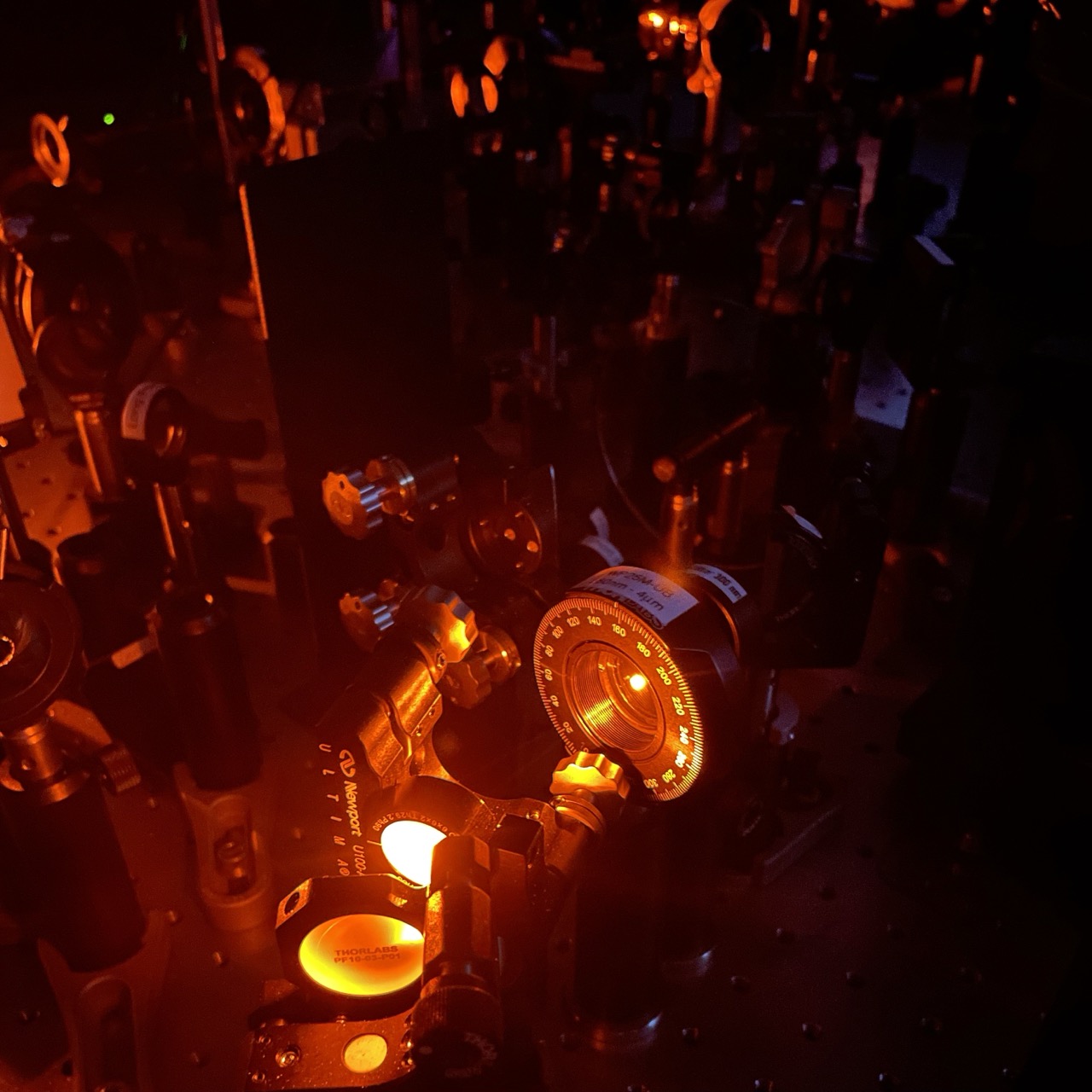
Our research interests
Our objective is to understand fundamental material properties (e.g., light–matter interactions, electron transfer processes, charge transport, molecular recognition) of organic and hybrid semiconductors, with applications in new generation solar cells, organic transistors, and organic bioelectronics. The current gap between missing fundamental understanding and the blind development of applications needs to be filled in order to achieve intelligent design of high-performance devices.
Our research revolves around the central question of what happens on the ultrashort time scale and ultrasmall length scale in organic solids to induce macroscopic function in devices, and how this can be optimized. Experimentally, we use a complementary palette of techniques combining (time-resolved) spectroscopy, pulsed photocurrent methods, terahertz experiments, Stark-effect spectroscopy, and device testing.
News
-
Nikos’ Defense!
Nikos did an excellent job defending his thesis centered on his work with Perovskite Solar Cells! Dieter Neher was an excellent external expert for the jury. Way to go Nikos!
-
HOPV2020 Presentation from Natalie
Natalie delivered an excellent talk on NFA Photophysics and Ultrafast Processes in Organic Solar Cells in front of a large remote audience at this year’s NanoGe HOPV online conference!
-
New Research Published!
Ever wondered about polaron photoconductivity in the weak and strong light-matter coupling regimes? Good news! Demetra and Natalie have worked with Noel Giebink’s team in Penn State to publish a paper on that exact topic! Read about it here!
-
New Research Published!!
Jan, Demetra, Nikos, and Natalie have participated in a fruitful collaboration to explore the excited state dynamics of mixed-cation-mixed-halide perovskites! Read more about it here.
-
New Research Published!
Nikos and Natalie have collaborated with Noah Strobel, Gerardo Hernandez-Sosa and others to publish research on color-selective printed organic photodiodes! Want to read more? Discover an application of these photodiodes and more here.
-
New Research Published!
Yufei, Martina, Gareth, Philipp, Rishi, Kaila, Julien, and Natalie have published work on charge-transfer in low-driving force systems. Click here to read about the unbalanced, but still fast nature of electron and hole transfer in non-fullerene based organic photovoltaic systems.
-
New Research Published!
Nikos, Demetra, and Natalie have published their work detailing the photo-physics of lead bromide perovskites which can be found here. Read on to discover how understanding the photo-physics of this interesting semiconductor can enrich our current pursuits of photovoltaic and light-emitting technologies!
-
Visit from Prof. Myung-Han Yoon
Prof. Myuan-Han Yoon and a few of his students traveled to Bern to give a lecture on their recent work on conducting nanofibers and perform some measurements.
-
New Research Published!
Philipp Krauspe’s work on Effective detection of weak terahertz pulses in electro-optic sampling at kilohertz repetition rates will be available in print in the Journal of the Optical Society of America B in January 2020, and it is available now online! To access the article, click here.
-
MRS fall meeting in Boston
Natalie organized a symposium on Structure–Function Relationships and Interfacial Processes in Organic Semiconductors for Optoelectronics at the MRS Fall 2019 in Boston. Demetra gave a talk on doped P3HT as part of the Structure–Function Relationships and Interfacial Processes in Organic Semiconductors for Optoelectronics at the MRS Fall 2019 in Boston. Natalie gave a talk in […]
